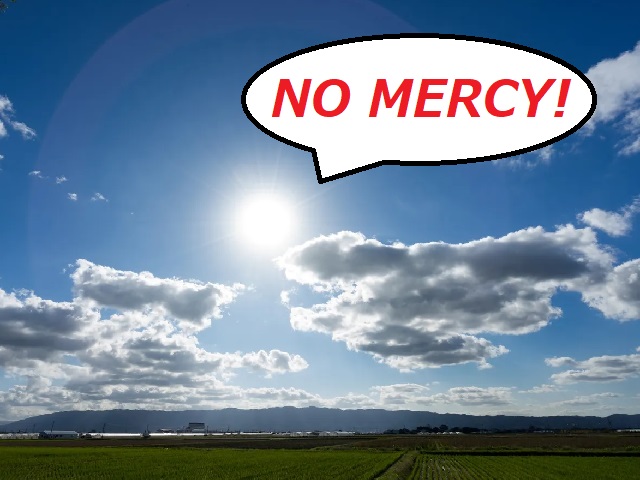
Sometimes “Atsui!” just isn’t enough.
In Japanese, the word for “hot” (as in hot weather) is atsui. But when there’s a day or night that’s really hot, there are actually official government terms for them.
According to the Japan Meteorological Agency (part of the the Ministry of Land, Infrastructure, Transport and Tourism), if the temperature rises above 35 degrees Celsius (95 degrees Fahrenheit), then it’s classified as a moushobi, or “ferocious heat day.” Meanwhile, if even the nighttime low is still above 25 Celsius (77 Fahrenheit), then we’re having a nettaiya, or “tropical night.”
▼ Sadly, the government has yet to enact a policy to distribute emergency rations of refreshing tropical drinks on “tropical nights.”
But what about when things get even hotter? The government’s terminology caps out at those 35/25-degree thresholds, so the Japan Weather Association, a non-government meteorological association, took it upon itself to come up with new terms through a poll of 140 of the organization’s members.
After tallying the responses, the association has dubbed days with a high temperature of over 40 degrees Celsius (104 degrees Fahrenheit) kokushobi, or “cruel heat days.”
And for those nights that go beyond nettaiya? Here the Japan Weather Association decided to keep things descriptive and simple, with the survey deciding that if the overnight low never dips below 30 Celsius (86 Fahrenheit), then it’s a chounettaiya, or “super tropical night.”
Thankfully, neither kokushobi nor chounettaiya are all that common in Japan. Since the start of modern record keeping in 1875, there have only been 67 recorded incidences of temperatures above 40 degrees Celsius, observed at a total of 32 locations, mostly in the Kanto and Tokai regions of east and central-east Japan. Super tropical nights are even rarer, having been observed only 15 times in 11 locations, almost all of them in the Hokuriku region which runs along the north-facing coast of Japan’s main island of Honshu (Niigata Prefecture has had seven recorded chounettaiya, and no other prefecture more than two).
However, records show only eight kokushobi occurrences prior to the year 2000, with 40 occurring since 2018 and the most recent in June of this year. We may end up seeing another before the summer ends, and the Japan Weather Association is cautioning everyone to be aware of the temperature and take adequate measures to prevent dehydration and heat exhaustion.
Source: Tenki.jp via Hachima Kiko
Top image: Pakutaso (edited by SoraNews24)
Insert images ©SoraNews24
● Want to hear about SoraNews24’s latest articles as soon as they’re published? Follow us on Facebook and Twitter!
Follow Casey on Twitter, where he can’t hear the word “nettaiya” without being reminded of the Orange Range song of the same name.

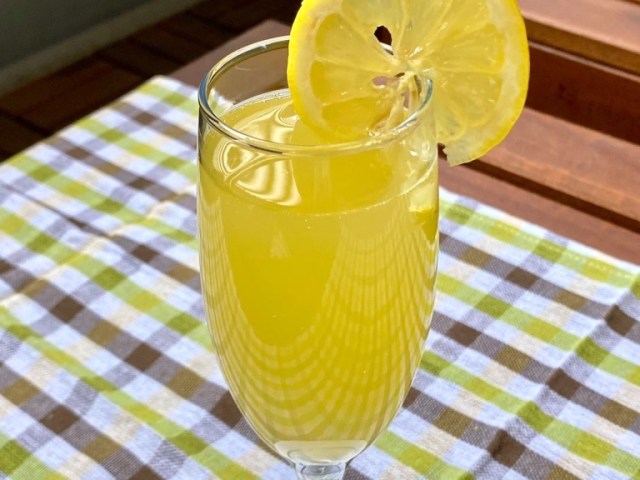
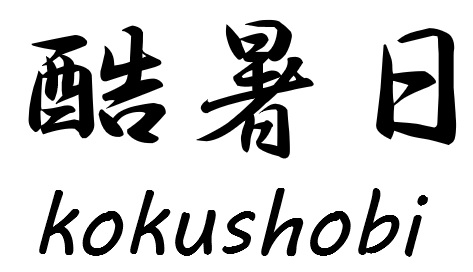
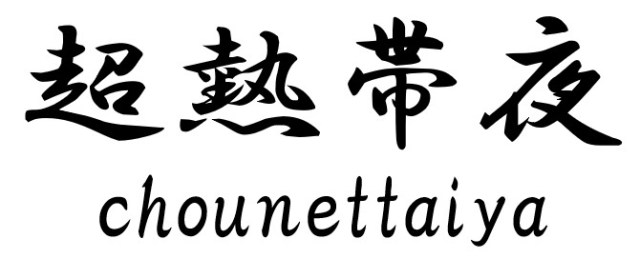
 It’s so hot in Japan that people are cooking food in/on their cars【Photos】
It’s so hot in Japan that people are cooking food in/on their cars【Photos】 What colors of clothing will keep you cooler in summer? Japanese researchers experiment
What colors of clothing will keep you cooler in summer? Japanese researchers experiment Young Japanese man dies while sunbathing in his home garden
Young Japanese man dies while sunbathing in his home garden Japanese summer is worse than summer in Death Valley, says our correspondent, a seasoned traveler
Japanese summer is worse than summer in Death Valley, says our correspondent, a seasoned traveler This is the best summer in years to visit Japan…if you hate mosquitoes
This is the best summer in years to visit Japan…if you hate mosquitoes Japan’s new difficult-to-drink-from beer glass protects your liver, but it’s a brutal experience
Japan’s new difficult-to-drink-from beer glass protects your liver, but it’s a brutal experience Hello, cosmetics! Clinique teams up with Hello Kitty this summer for first-time collaboration
Hello, cosmetics! Clinique teams up with Hello Kitty this summer for first-time collaboration How to order snacks on a Shinkansen bullet train in Japan
How to order snacks on a Shinkansen bullet train in Japan Demon Slayer: Kimetsu no Yaiba gets new roller coaster attractions and food at Universal Studios Japan
Demon Slayer: Kimetsu no Yaiba gets new roller coaster attractions and food at Universal Studios Japan New samurai glasses are Japan’s latest weird must-have souvenir
New samurai glasses are Japan’s latest weird must-have souvenir Burger King Japan suddenly adds Dr. Pepper and Dr. Pepper floats to its menu nationwide
Burger King Japan suddenly adds Dr. Pepper and Dr. Pepper floats to its menu nationwide New Nintendo Lego kit is a beautiful piece of moving pixel art of Mario and Yoshi【Photos】
New Nintendo Lego kit is a beautiful piece of moving pixel art of Mario and Yoshi【Photos】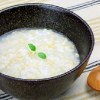 What do you eat when you catch a cold? We asked 11 of our Japanese reporters
What do you eat when you catch a cold? We asked 11 of our Japanese reporters High-fashion Totoro cuddle purse is like an elegant stroll in the forest【Photos】
High-fashion Totoro cuddle purse is like an elegant stroll in the forest【Photos】 Why Japanese doesn’t need swear words
Why Japanese doesn’t need swear words Nintendo history you can feel – Super NES, N64, and GameCube controllers become capsule toys
Nintendo history you can feel – Super NES, N64, and GameCube controllers become capsule toys “The most Delicious Cup Noodle in history” – Japan’s French Cup Noodle wins our heart【Taste test】
“The most Delicious Cup Noodle in history” – Japan’s French Cup Noodle wins our heart【Taste test】 Starbucks releases a cute Frappuccino and Unicorn Cake…but not in Japan
Starbucks releases a cute Frappuccino and Unicorn Cake…but not in Japan Kyoto Tower mascot termination reveals dark side behind cute Japanese characters
Kyoto Tower mascot termination reveals dark side behind cute Japanese characters McDonald’s Japan’s Soft Twist Tower: A phantom ice cream only sold at select branches
McDonald’s Japan’s Soft Twist Tower: A phantom ice cream only sold at select branches Yabai Ramen: What makes this Japanese ramen so dangerous?
Yabai Ramen: What makes this Japanese ramen so dangerous? Finally! Nintendo Japan expands Switch 8-bit controller sales to everybody, Online member or not
Finally! Nintendo Japan expands Switch 8-bit controller sales to everybody, Online member or not Japanese government wants to build luxury resorts in all national parks for foreign tourists
Japanese government wants to build luxury resorts in all national parks for foreign tourists To combat declining birth rate, Japan to begin offering “Breeding Visas” to foreigners
To combat declining birth rate, Japan to begin offering “Breeding Visas” to foreigners 10 things you should buy at 7-Eleven in Japan
10 things you should buy at 7-Eleven in Japan Studio Ghibli releases anime heroine cosplay dresses that are super comfy to wear
Studio Ghibli releases anime heroine cosplay dresses that are super comfy to wear Woman charged for driving suitcase without a license in Osaka
Woman charged for driving suitcase without a license in Osaka Studio Ghibli unveils My Neighbour Totoro miniature house model
Studio Ghibli unveils My Neighbour Totoro miniature house model Kyoto experiencing problems with foreign tourists not paying for bus fares, but not on purpose
Kyoto experiencing problems with foreign tourists not paying for bus fares, but not on purpose Fighting mild hunger with a Japanese soda that turns into jelly in the stomach【Taste test】
Fighting mild hunger with a Japanese soda that turns into jelly in the stomach【Taste test】 Studio Ghibli’s Howl’s Moving Castle tapestry unveiled in Japan for first time
Studio Ghibli’s Howl’s Moving Castle tapestry unveiled in Japan for first time McDonald’s new Happy Meals offer up cute and practical Sanrio lifestyle goods
McDonald’s new Happy Meals offer up cute and practical Sanrio lifestyle goods Sales of Japan’s most convenient train ticket/shopping payment cards suspended indefinitely
Sales of Japan’s most convenient train ticket/shopping payment cards suspended indefinitely Sold-out Studio Ghibli desktop humidifiers are back so Totoro can help you through the dry season
Sold-out Studio Ghibli desktop humidifiers are back so Totoro can help you through the dry season Japanese government to make first change to romanization spelling rules since the 1950s
Japanese government to make first change to romanization spelling rules since the 1950s Foreigner’s request for help in Tokyo makes us sad for the state of society
Foreigner’s request for help in Tokyo makes us sad for the state of society Ghibli founders Toshio Suzuki and Hayao Miyazaki contribute to Japanese whisky Totoro label design
Ghibli founders Toshio Suzuki and Hayao Miyazaki contribute to Japanese whisky Totoro label design Doraemon found buried at sea as scene from 1993 anime becomes real life【Photos】
Doraemon found buried at sea as scene from 1993 anime becomes real life【Photos】 Tokyo’s most famous Starbucks is closed
Tokyo’s most famous Starbucks is closed Princesses, fruits, and blacksmiths: Study reveals the 30 most unusual family names in Japan
Princesses, fruits, and blacksmiths: Study reveals the 30 most unusual family names in Japan Tokyo too hot for you? It’s already snowing in Hokkaido, Japan’s northern island【Photos】
Tokyo too hot for you? It’s already snowing in Hokkaido, Japan’s northern island【Photos】 Japanese delivery company tests ideal kotatsu temperature for cats, with live cats
Japanese delivery company tests ideal kotatsu temperature for cats, with live cats Summer in Japan doesn’t feel like a Japanese summer this year, many are saying
Summer in Japan doesn’t feel like a Japanese summer this year, many are saying Three people die on Mt. Fuji less than 24 hours after official start of climbing season
Three people die on Mt. Fuji less than 24 hours after official start of climbing season 10 girls rushed to hospital for heatstroke after Tokyo high school’s non-air-conditioned assembly
10 girls rushed to hospital for heatstroke after Tokyo high school’s non-air-conditioned assembly Cherry blossoms begin blooming in Tokyo, earliest start to sakura season for third year
Cherry blossoms begin blooming in Tokyo, earliest start to sakura season for third year Why is it so hard to find hot sake in convenience stores in Japan?
Why is it so hard to find hot sake in convenience stores in Japan? Bottled hot water selling like bottled hot cakes in Japan
Bottled hot water selling like bottled hot cakes in Japan How to dress for the weather: A guide from Japan
How to dress for the weather: A guide from Japan As summer comes to an end, it’s time to get ready for a plague of mosquitoes in Japan
As summer comes to an end, it’s time to get ready for a plague of mosquitoes in Japan Japanese museum dedicated to salmon have no live salmon on display this year
Japanese museum dedicated to salmon have no live salmon on display this year You can make your own hot spring bath at this river in central Japan【Japan travel】
You can make your own hot spring bath at this river in central Japan【Japan travel】 No electricity? No problem! Empty plastic bottles are helping to cool homes in impoverished areas
No electricity? No problem! Empty plastic bottles are helping to cool homes in impoverished areas Japanese vending machines set to become cooler than ever by selling sub-zero soft drinks
Japanese vending machines set to become cooler than ever by selling sub-zero soft drinks
Leave a Reply